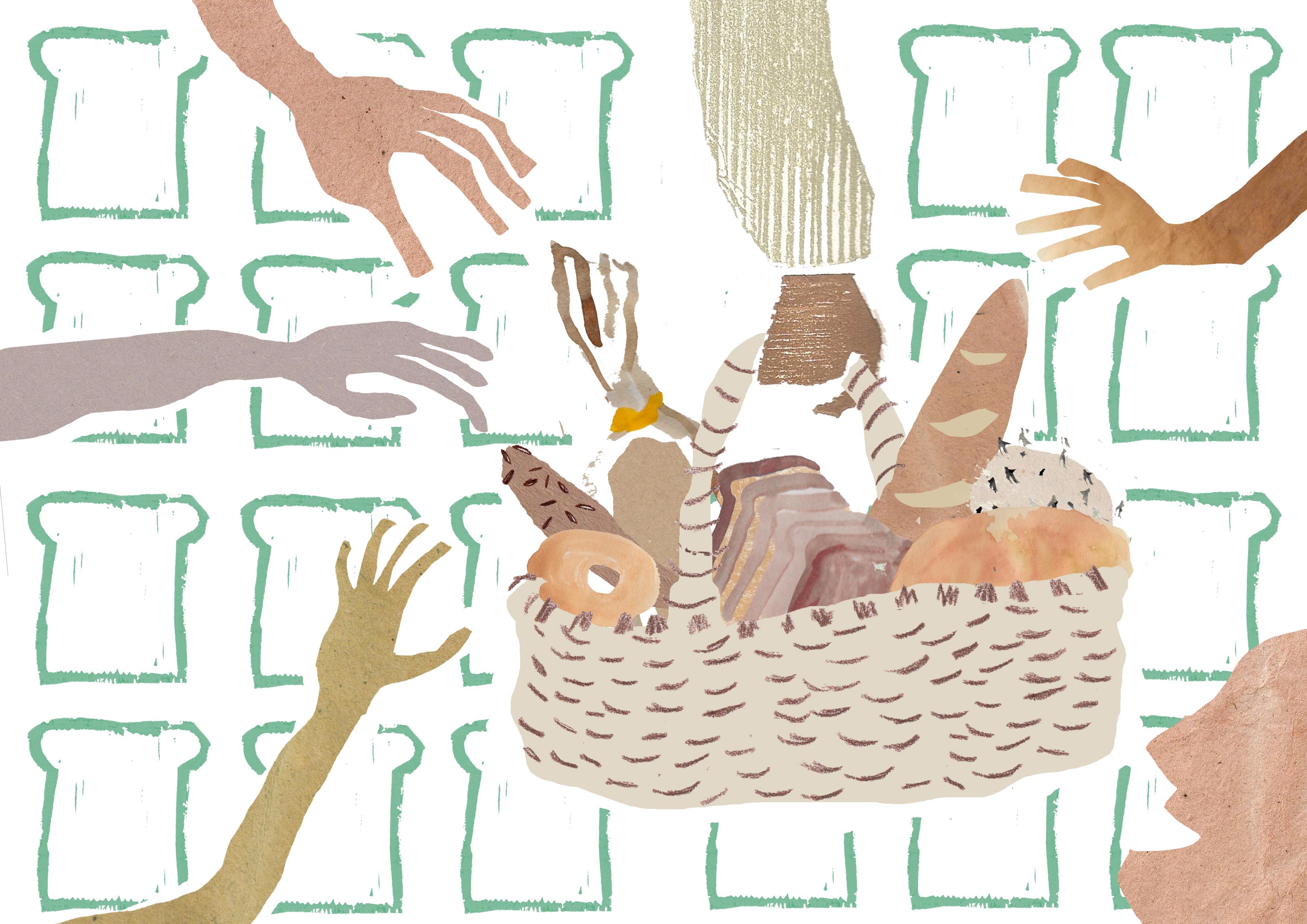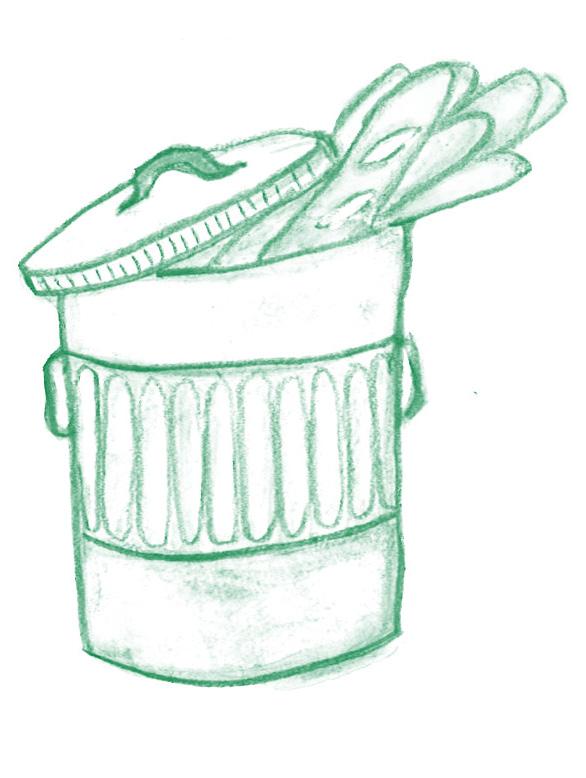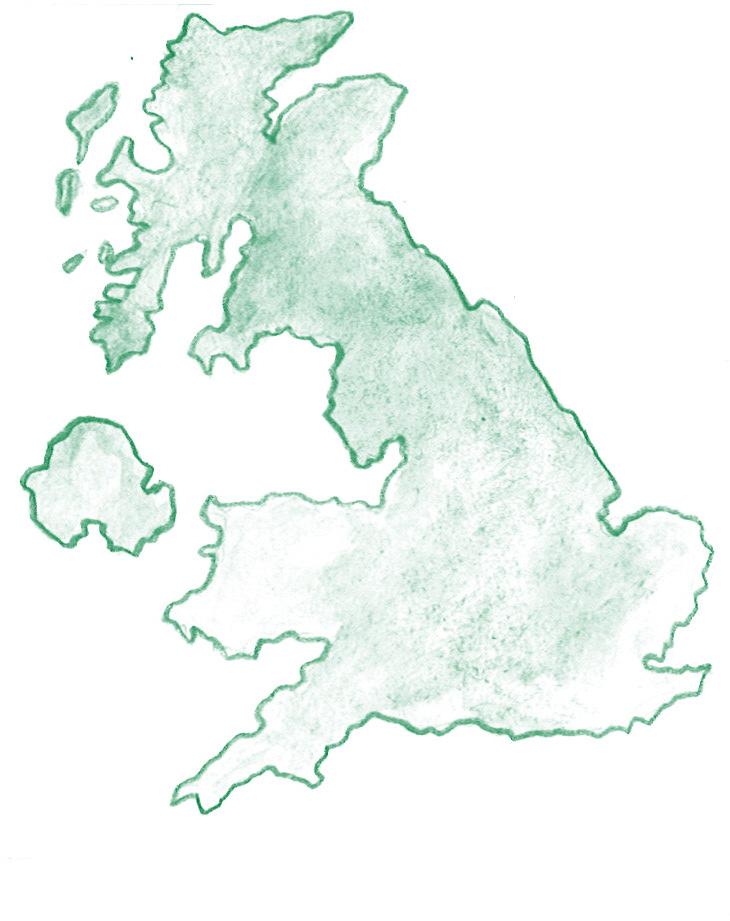A celebration of bread in all its forms


We love bread!
In the UK we buy 11 million loaves of the stuff every day!
So why do we throw away over 1 million of those loaves in the same day?

We waste almost 900,000 tonnes of bread every year. In terms of calories, that's enough to lift over 26 million people out of hunger.
ILLUSTRATION BY KATIE WAUCHOPE
Bread. Is there anything it can’t do?
From breakfast toast to midnight snacks and everything in between. As part of a starter, for lunch, with a main and oh, as the base for some of our most beloved desserts, it’s a cornerstone of every culture around the world. And then there is the smell of freshly baked bread, with its ability to evoke memories of warm, comforting kitchens of childhood or lazy Sundays. Give me good bread and I could eat an entire loaf in one sitting.
But despite its enduring appeal and incredible versatility, bread is one of our most wasted foods. We throw out a staggering 2 million slices of bread from our homes every day in Scotland, with each person binning on average half a loaf of bread every month. This costs us householders £49 million each year. Three quarters of all bread in the bin is there because it’s not used in time, either before its ‘best before’ date or because it’s judged as having gone off.
So what can we do?
One easy solution is to freeze bread if we don’t think we’ll use it in time. If you have a real surplus, consider donating it for others to enjoy, whether to friends and neighbours or to food sharing projects such as The Real Junk Food Project in Glasgow. However you do it, be part of the solution to bread waste. And what better place to start than at this, first ever, bread festival in Glasgow? Let’s show our love for that favourite of staple and celebrate its social and emotional significance which surely spans far beyond just nourishment.
Ylva Haglund Food Waste Campaigns Manager Zero Waste Scotland

scotland.lovefoodhatewaste.com
zerowastescotland.org.uk
lovefoodhatewastescotland
zerowastescot
Welcome to the first ever zine from The

So who are we and why does it matter if you put a bit of bread in the bin now and again? Since it’s inception in 2013 we have grown to become a global network of over 200 groups that have prevented over 2,500 tons of perfectly edible food from going to landfill feeding over 1.1 million people. In Glasgow we operate as a social enterprise that rescues surplus food to provide nutritious pop-up community meals, cooking workshops and zero-waste catering.
As well as the positive environmental impacts of reducing edible food waste, the project also has clear social benefits through operating a ‘pay-as-you-feel’ policy at our community meals. The system transcends monetary transactions and liberates people to use their skills and attributes as well as money to pay for their meals. Furthermore, we aim to highlight the absurdity that the produce we use has been stripped of its monetary value but still retains its nutritional value.
By making people think about what they wish to contribute for their meals we get people thinking about how they value food as a resource. We challenge the food industry by exposing the perfectly edible food that is wasted and educate the public on key issues that create this surplus. We aim to abolish food waste by challenging social stigmas attached to food provisions and create inclusive environments.
Our aim is to #FeedBelliesNotBins
We have some big plans coming up and need your help. If you share our passion we would really love to hear from you! Whether you’d like to lend a hand at our next event or create more discussion please get in touch.
Laura Wells Founder/Organiser
The Real Junk Food Project Glasgow
trjfpglasgow
trjfpglasgow
trjfpglasgow@gmail.com

Real Junk Food Project Glasgow!



A massive 44% of all bread produced is thrown away 24 million slices of bread are thrown away every year in the UK

The UK is the worst offender in Europe when it comes to food waste!
Google it!
Throughout the World in almost every country, people have found various ways to utilise unwanted scraps of bread to be as thrifty as possible with what’s available. Below are just a few examples of how different cultures have reinvigorated and celebrated their leftovers. Search them up, make them, find more if you can, and let us know!

RIBOLLITA
This thrifty Italian classic is a triumph of forgiveness when it comes to making the most of leftovers. Its name means reboiled — the intention being that it could be made in vast amounts, then reheated on subsequent days. It’s not only a great vehicle for leftover cannellini beans, but also all manner of cooked and raw veg, scraps of Parmesan rind and of course bread!
GARBURE
Moving to French cuisine, a great way of using up stale bread is in a simple Gascon soup, Garbure, made with layers of bread and cabbage, flavoured with ham, beans and vegetables.
PANADA
This is a savoury bread pudding from Spain which is made with caramelised onions and cheese. Or Migas, another Spanish dish made from stale bread and chorizo.
STRATA
I came across a recipe for something called Strata, which I was completely unfamiliar with. It is a popular American dish made with layers of bread, egg and cheese, a sort of bread frittata and perfect for breakfast or lunch.
ØLLEBRØD
Translated literally, this means beer bread. This hearty porridge is a traditional Danish dish, made to use up pieces of leftover rye bread. In a country known for dense rye bread, inevitably there's going to be a few dry and stale bits that you can barely toast. Solution? Soak it in beer. The perfect recipe for zero food waste cooking.
Cooking on a bootstrap
Jack Monroe is a campaigner, food writer and activist. Her first cookbook A Girl Called Jack, was a best seller selling nearly 60,000 copies. The sequel Cooking on a Bootstrap makes budget food fun and delicious. Jack shows us that affordable, authentic and creative recipes aren’t just for those with fancy gadgets or premium ingredients...
BERRY BREAD PUDDING
Taken from cookingonabootstrap.com
This luscious, dense, simple little number was thrown together in the midst of a craving for something hot, stodgy and comforting while I worked from home in the bitter cold. You can use fresh berries if you prefer, but I like the variety of four or five you tend to get in a frozen bag, as well as the price.
INGREDIENTS, SERVES 9 AT 11P EACH
300g bread
100g frozen berries
50g sultanas
100g sugar
4tbsp apple sauce
250ml water
METHOD
First, finely dice/grate/food process/ blend your bread. Anything goes, as long as your bread is in small pieces.
In a large mixing bowl combine the bread, berries, sultanas and sugar and mix well.
Fill a mug with 250ml cold water, and add the apple sauce. Mix vigorously to make a very runny apple water.

Mix all of the ingredients thoroughly to form a deep reddish curious slop. Lightly grease a shallow tin and spoon it in. Press down firmly with the back of your spoon, then cover and leave to stand for an hour.
Turn on the oven to 180 C and cook for 30 minutes, then for a further 30 minutes at 160 C. Remove from the oven and gently probe the centre with a skewer. It should be dense and moist, but not wet. This will depend on the depth of your tin.
When cooked through, turn the oven off and leave the bread pudding inside for a further half an hour to start to cool.
When finally cooled and firm enough to cut through, remove from the oven. Cut into nine squares and gently lift each one from the tray and enjoy.
These freeze well and could also be used for the base of a trifle.
Leftover Classics
PANZANELLA
Contributed by Marc Mazoyer
@cooking_therapist_glasgow
You’re best to use a good loaf of bread like a baguette or Ciabatta rather than regular sliced bread as it has a better texture for croutons. I’ve made the croutons in the oven instead of frying them to cut down on oil but you can choose to fry them on the stove top if its easier.
The whole recipe is very adaptable to what you have and what your tastes are so I wouldn’t be too worried about quantities. It’s a great way of using up stale bread and transforms it into a really delicious, comforting meal.
INGREDIENTS
300g cherry or baby plum tomatoes
3– 4 slices of stale bread
I onion
1 clove garlic
2 tbsp olive oil
Small handful of fresh basil
2 tsp balsamic vinegar
Salt and pepper
METHOD
Preheat oven to 200 C.
Cube the bread into squares, roughly 2cm by 2cm cubes.
Put this in a bowl, season and pour in 1 tablespoon of oil. Toss the bread cubes until coated in oil and season and then spread them on a baking sheet. Bake for 8—10 minutes.

Put the remaining oil in a wide frying pan and put on a low heat. Halve the tomatoes, peel the onion and cut into thin half moons. Add to the pan and stir every minute or so to make sure they soften but do not burn.
Peel and mince the garlic and add to the pan. Stir for a minute or so then turn up the heat and add the tomatoes, balsamic and more seasoning. Stir for a few minutes until the tomatoes are nice and soft. Finally pour in the basil and the croutons and toss all together. Pour into a bowl and serve hot.

PANGRATATO
Contributed by Christopher Bernstein
@bernsteinchristopher1
An Italian way of using up leftover bread. Keeps well in a jar for a month and is perfect sprinkled over pasta dishes, green veg, fish and chicken.
INGREDIENTS
150g stale bread
2 tbsp freshly chopped rosemary
2 tbsp freshly chopped thyme
1 –2 cloves garlic, finely chopped
Olive oil
Salt
METHOD
Preheat oven to 150 C.
Pulse the bread in a food processor or blender for rustic breadcrumbs, but not too fine.
Combine with the herbs garlic and a few good tablespoons of oil on a baking tray and season well with salt.
Bake for approximately 15 minutes until golden and crispy.
Leave to cool and store in an airtight jar.
BREAD SAUCE
Contributed by Christopher Bernstein @bernsteinchristopher1
An old fashioned recipe with a modern tweak utilising whatever left over breads you have, this sauce lends itself well to almost any dish.
A good way to think about it is flavoured milk and bread, so mix up your flavourings, breads and milks for something completely original. Here I chose pita breads with lemon, spices and basil and paired it with simple salmon and spring vegetables.
INGREDIENTS
120g stale pita bread torn up (or brown/white/wholegrain)
500ml milk (or nut/oat/rice milks)
1 medium white onion
2 garlic cloves
1 tsp thyme freshly chopped
1 tsp nutmeg freshly grated
1 tsp lemon zest
3 stalks basil leaves
METHOD
Finely chop the onion and garlic and cook in a splash of oil on a medium heat for 1 minute. Add the thyme, nutmeg and lemon zest and cook for a further 2 minutes on low.
Combine the bread and milk, enough to just cover the bread. Bring to a boil and simmer for 3 minutes, then add the leaves from the basil.
Finally, blend the sauce and season to taste. If the consistency is a little thick add a splash more milk.

BANANA FRENCH TOAST
Contributed by Lucy Watkins
@gwyneth____paltrow
A classic recipe to make use of any leftover bread including those crusts, even if its a little dry and stale around the edges! Adding the banana and cinnamon is a good way of adding sweetness and 1 of your 5 a day without adding any extra sugar. Combined with endless toppings youve got a dish to last you every day of the week.
INGREDIENTS, SERVES 1
2 to 3 slices bread
1 banana
2 eggs cinnamon, to taste olive oil, butter or similar
TOPPINGS IDEAS
sliced apple and nut butter, blueberries, honey and yoghurt, desiccated coconut and marmalade, dark chocolate, dates and walnuts
METHOD
In a shallow bowl combine the cinnamon, eggs and banana until well mixed. Place the bread in, leaving for 1—2 minutes or so on each side to allow it to soak in completely. The longer the better!
Meanwhile, heat the oil or butter in a frying pan over a medium heat until sizzling, then place in the eggy bread.
Once golden brown on one side, flip, and do the same on the reverse.
Remove from the pan and serve hot with your choice of topping.
BREAD AND BUTTER PUDDING
Contributed by Maisie Campbell @maisies_munchies
INGREDIENTS, SERVES 4
8 slices bread
butter
2 eggs
200ml milk
100ml cream
50g sugar
Vanilla essence
METHOD
Pre-heat the oven to 180 C.
Slice the bread into triangles, spread with butter and layer into an oven proof dish.
Combine the milk, cream, eggs, sugar, vanilla essence and pour over the bread mix, allowing it to fill the dish to about three quarters, then leave to stand for 15 minutes to allow the bread to soak up the egg mixture properly.
Bake for around 20 minutes or until golden brown, and serve warm.

TOP TIPS AND VARIATIONS TO JAZZ UP YOUR BREAD AND BUTTER PUDDING
Contributed
by Laura Wells
Don’t have any eggs or want to make this vegan? Use the same method as above but combine 600ml soya milk with 5 tablespoons of cornflour, the sugar and vanilla essence. Whisk well until combined, then place over a medium–low heat. Simmer gently until this custard-like mixture is almost boiling and coats the back of a wooden spoon, whisking continuously.
Before eating/juicing your orange/lemon/ grapefruit, remove the zest from the skin and add to the egg mixture before baking. Any extra can be stored in the freezer until needed.
Once the pudding is ready, brush over some marmalade or jam and return to the oven for a further 5 minutes, or until golden brown and sticky.
Croissants, hot cross buns and other bread or pastries also work well in this pudding in place of bread.
Add some dried fruit to the mix like raisins, currants, apricots, figs and dates. They’re full of iron and fibre and a 30g serving counts towards 1 of your 5 a day!
BREADCRUMB, SEA SALT AND DARK CHOCOLATE COOKIES
Contributed by Hana Wilde
INGREDIENTS
250g unsalted butter, softened
150g caster sugar
150g soft light brown sugar
3 egg yolks
1/2 tsp vanilla essence
250g dark chocolate chips
1/2 tsp sea salt flakes
3/4 tsp bicarbonate of soda
200g bread crumbs
120g plain flour
METHOD
Preheat oven to 150 C (fan oven).
Toast the bread and blitz to fine crumbs. Beat together the butter and sugars until just combined. Stir in the egg yolks and vanilla essence.
Sift together the flour and bicarbonate of soda. Add the breadcrumbs, sea salt and dark chocolate chips.
Combine the wet and dry ingredients to form a stiff dough then cover and chill for 30 minutes.
Roll into balls of about 40g each and place on a baking tray.
Bake for 12—15 minutes until golden and crisping around the edges, they will set as they cool.
The experimental side...
Throughout the country there are people who are beginning to get very creative with their unwanted crusts. Here's just a few examples of the things going on. Let's hope this is the beginning of a movement that will continue well into the future.

FERMENTING CRUSTS
@silobrighton on 5 April 2018
Each week we accumulate a decent amount of crusts from the Silo Sourdough, aka the Siloaf. Instead of resigning them to compost, we turn it into precious miso.
We soak the crusts in water over night, squeeze, mix it with equal parts Koji and 7% salt, then into jars to ferment for 3 months at around 18 degrees. This then blends into a paste reminiscent of savoury toffy... Buttery fermented good times. Its so extremely delicious!
All waste has potential, some requires extra commitment and a healthy dose of imagination.
#wasteisafailureoftheimagination
#zerowaste
#silobrighton
#fermented


REMILLING LEFTOVER BREAD
@theethicurean on 17 March 2018
Sea buckthorn, honey & thyme cake made from our left over bread that has been re-milled back into flour.
@seasonal_eats has been getting creative with any small amount of food that’s past its best, and this cake is a wonderful cake made from potential waste.
In support of the Sustainable Restaurant’s #OnePlanetPlate campaign, this will be on the menu in time for @wwf_uk #EarthHourUK next Saturday, and then henceforth. Pop in and have a slice. #theethicurean.

BREWING BEER IN GLASGOW!
Interview by Tanith Marron @tanithmarron
We heard tell that a local brewery is making beer out of bread. Turning bread into beer is no new feat, there are brewers the world over working on their own bready recipes; in fact, the oldest known recipe for beer describes a brew made from barley bread… So what’s so special about this brew?
WHO ARE JAW BREW?
Jaw Brew is a family-run, craft, microbrewery right here in Glasgow. The team, Mark, Alison, Robyn, Tommy and Alick, are committed to making top quality beer and strive to work sustainably, towards a circular economy. Jaw Brew began life at the family homestead. With support from family and friends, it's now situated in Hillington East. The brewery boasts its own shop, so we popped in for a visit to learn more about their brew Hardtack.
WHAT IS HARDTACK?
In 2016 Jaw Brew teamed up with Aulds Bakery to produce Hardtack, a blonde beer made using surplus morning rolls. It has a full bodied taste with a low abv%, a unique brew for the adventurous and environmentally conscious drinker! Alick, our tour guide for the day let us try some, it's a rather tasty beverage.
Alick tells us twenty-eight kilograms of morning rolls are added to the mash of each brew. Apparently this is quite an event, with the whole team chipping in to ‘fluff’ the bread into small pieces and get it into the mash as fast as they can. The rolls serve to add a bite to the taste and body to the beer, it also contributes to the low abv%.
Hardtack won a bronze medal in the Scotland Region SIBA awards ahead of many larger, longer-established brands. Jaw Brew also received a commendation at the Vibes Awards for their Circular Economy initiative and it’s easy to see why. It is not only locally brewed but also uses local and surplus ingredients (the rolls are baked just down the road!), its made British barley and hops, and Jaw Brew use Glaswegian water in all their brews. So, with a sales market in the central belt Hardtack can be celebrated as a low emissions choice too. We give this blonde beer a big thumbs up.
WHERE CAN I GET SOME?
Hardtack is currently stocked in The Cave on Great Western Road and in the Jaw Brew Brewery Shop, Montrose Avenue, Hillington East.

BAGUETTE SCONE!
Contributed by Tanith Marron @tanithmarron
“Ooh, Poppy! Did you hear about the new assistant down at the bakers?”
“Oh hullo Marge, I hav’nae, is he up to the crust?”
“Well, Bryean the Baker said at first he was no good, always loafing around!”
“That scone’t go on long, knowing Bryean he’ll be gettin’ all ryeled up!!”
“Aye, he was havin’ naan of it. Told him he had to rise to the challenge or he’ll be toast!”
“So, did he do any pita?”
“Well, last week Bryean said he was on a roll! The young fella, Crustopher his name is, said he was loafing the work but the pay is crumby!”
“Oh dear.. Wheat’s he getting?”
“Oh, it’s a flourly wage.. But, Poppy, you’ll never guess wheat’s happened since.”
“Oh Marge, wheat is it?”
“Well Poppy, this is knead-to-know…”
“Of course Marge! I won’t be spreading crumbours, you know me!”
“It’s crust that.. the Brye an found Crustopher with dough in his pocket!”
“He didn’t!?”
“He did!”
“ Bhan mi! That’s a breach of crust! What did the Bryean say?”
“He’s toast! Told him to baguette scone!”
M P M P M P M P M P M P M P M P

Thanks to Christopher Bernstein, Binnur Cavuslu, Maisie Campbell, Tanith Marron, Marc Mazoyer, Clementine Thomas, Katie Wauchope and Hanna Wilde for their contributions, to Edwin Pickstone for production, and to Laura Wells for bringing us all together.
Cover illustration
Clementine Thomas @clementine.vz.thomas
Design and editorial Lucy Watkins lucyellawatkins.com
S upported by


For the Crossmyloof Bread Festival 2018 A zine by The Real Junk Food Project Glasgow












